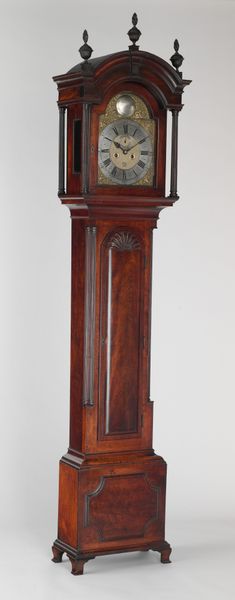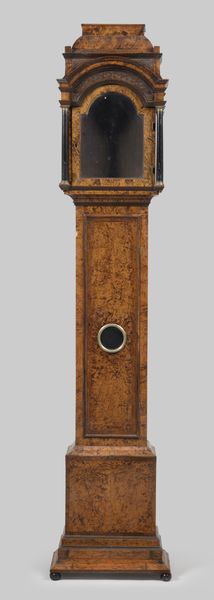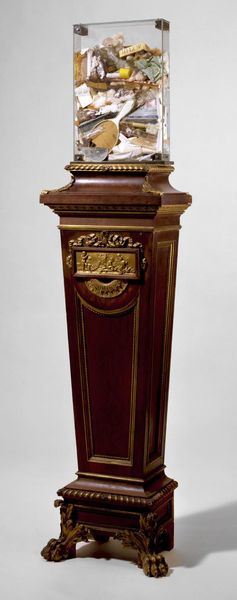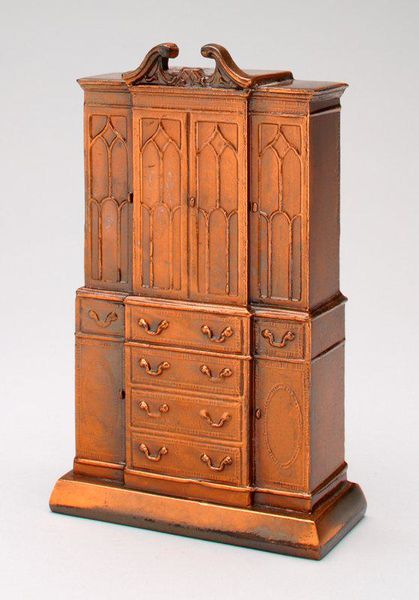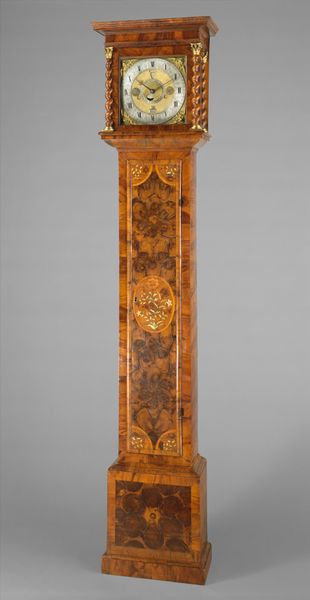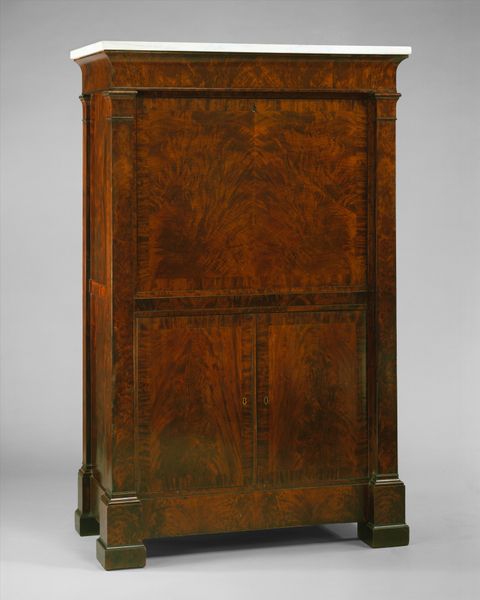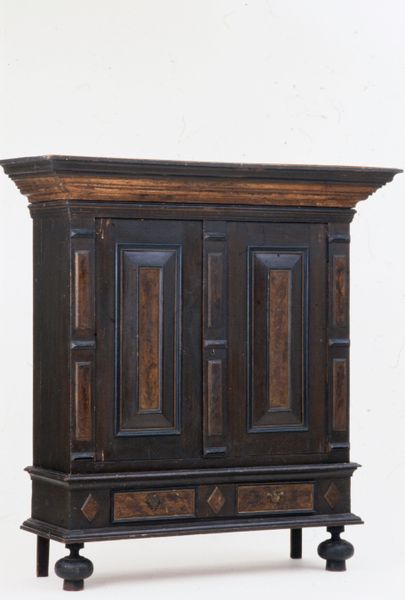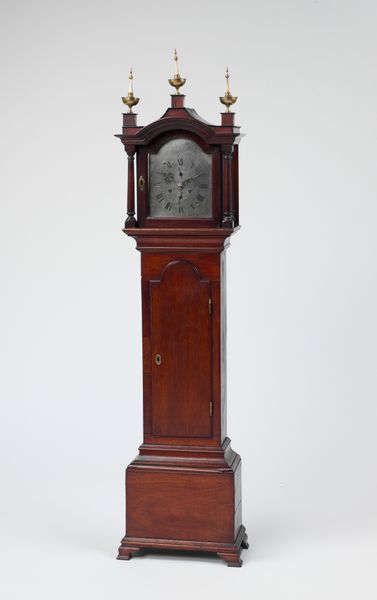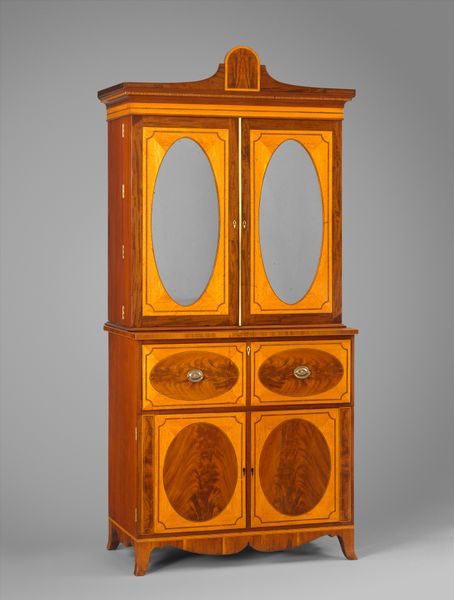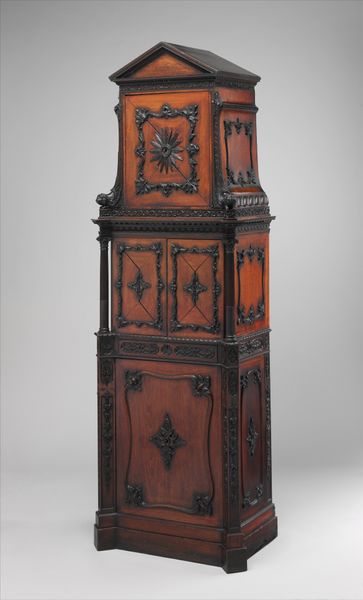
wood
#
portrait
#
geometric
#
united-states
#
wood
#
history-painting
#
decorative-art
Dimensions: 96 1/2 x 21 1/2 x 12 1/2 in. (245.1 x 54.6 x 31.8 cm)
Copyright: Public Domain
Curator: Standing before us, we have a magnificent tall clock. Its maker was Jacob Diehl and the period it was crafted dates from 1797 to 1800. It now resides at the Metropolitan Museum of Art. Made primarily from wood, the artistry feels both grand and intimate. Editor: Immediately, I am struck by the presence this piece commands! It's as if it’s holding centuries of secrets, a stoic guardian of time itself. There’s an almost severe formality to its design, yet those floral inlays soften the look and the face staring down—that pale face—has me more than a little spooked. Curator: I’m fascinated by the fact that clocks like this were often the most expensive piece of furniture a family owned. It spoke volumes about their status, their understanding and command over their lives, but I can imagine this particular model doing more than that. Just look at all that inlaid detail, all of those shapes... Editor: Yes, that geometric inlay creates an interesting tension! In a society supposedly structured by notions of democracy and equality, such overt displays of affluence also cemented class divisions. And I feel that in the geometric decorations! All these repetitive, predictable shapes that try and assert an idea of the individual controlling time, the market, his assets...It's the architecture of domination itself. Curator: I feel you there. Thinking about the craftsmanship of this piece in the context of the American experiment – those inlays were each and every one painstakingly crafted by hand – yet here they are, working to prop up an architecture of domination, as you say. But consider those flowers...Perhaps, even in this house of stricture, something small, bright, and defiant can flourish. Editor: And it goes both ways. The details offer small escapes, momentary reprieves for our eyes when we consider the full weight of that rigid structure—an expression of personal history, and maybe even resistance. Curator: Indeed. It’s almost as if, like us, the clock has its own set of personal stakes at play within the socio-political landscape that surrounds it. This exercise gives me a more visceral, richer reading of it. Editor: For me, the act of thinking through its implications provides context for pieces and traditions from the past.
Comments
No comments
Be the first to comment and join the conversation on the ultimate creative platform.
